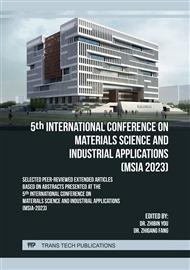p.3
p.13
p.19
p.25
p.33
p.41
p.53
p.61
Chemical Composition and Microstructure Characterization of High Purity CuMn Alloy for Integrated Circuit
Abstract:
High purity copper and copper alloy targets are the key supporting materials for the interconnection of integrated circuits in advanced processes. In this article, the chemical composition and microstructure of Cu-0.6wt%Mn alloy were characterized by means of Glow Discharge Mass Spectrometry, Inductive Coupled Plasma Emission Spectrometer, Optical Microscope and Scanning Electron Microscope. The results show that the total impurity content for Cu-0.69wt%Mn alloy is less than 1 ppm. The three key impurities contents of Ag and Fe and Si could meet the requirement of electronic materials for integrated circuits by use of high purity raw material and appropriate melting and casting methods. Mn content at different positions along the diameter direction fluctuates slightly between 0.66~0.72 wt%, and completely distributed uniformly in the Cu matrix without any trace of aggregation. Due to the influence of raw materials and casting technology, defects such as porosity and carbon inclusion are easy to appear in as-cast microstructure. Therefore, it is necessary to develop new casting mould and casting processing to improve the quality of ingots.
Info:
Periodical:
Pages:
25-29
Citation:
Online since:
May 2023
Authors:
Price:
Сopyright:
© 2023 Trans Tech Publications Ltd. All Rights Reserved
Share:
Citation:



